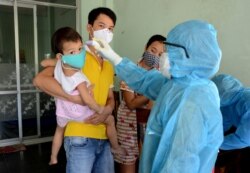The new cases of COVID-19 that emerged in Vietnam’s Danang city — 30 cases since the weekend — marked an abrupt end to the Southeast Asian nation’s 100-day streak with no local transmissions of the coronavirus. It was a period of relative calm as people returned to work feeling sheltered from the pandemic that is raging outside the borders. Now, the new cases leave Vietnam to puzzle over how the virus may have been lurking in the community and how it infected locals, most of whom had not been traveling. It also begs the question of whether, even with a perfect pandemic response, it is really possible to quash the virus out of existence.
Here are three takeaways from the small COVID-19 resurgence in Vietnam.
There is a crack in every set of armor
First, there is a crack in every set of armor. Vietnam has been the envy of many other nations, having responded swiftly to the disease outbreak and reported zero deaths from it. However, it is always possible for a germ to slip through the cracks. The government introduced robust protocols early in the year as it isolated patients, canceled international flights, contact traced, and ordered social distancing. The protocols are subject to individual fallibility, though. A private citizen can forget her mask. A hospital worker can miss a spot when cleaning. A traveler can get around borders or other checkpoints.
“You just need one chain, one screw loose, and the whole machine will be affected,” Vu Duc Dam, Deputy Prime Minister of Vietnam, said.
In addition to individual actions, the protocols themselves are not meant to be bulletproof. Unless 100% of the population is tested, the virus can continue to spread undetected until someone shows symptoms, which is what happened in Danang.
This dynamic suggests that, as governments set goals in the pandemic, they are not likely to obliterate COVID-19 in the near future, nor expect every citizen to be vigilant 24 hours a day. Instead they can suppress the spread enough so that hospitals aren’t overrun, and people can go back to daily life at lower risk.
The novel coronavirus is still a mystery
Vietnam is following clues down multiple paths to trace the latest infections of a virus it thought had been suppressed. Authorities didn’t say if the recent arrest of a foreigner is linked to the outbreak but ordered an investigation into illegal foreign travel as a possible source of infection.
Around the world, understanding the coronavirus has evolved as health officials gather data and learn more about it, such as the utility of masks and the chance of transmission not just from infected surfaces but from air particles.
The recovery won’t be linear or even
Vietnam, which has one of the few economies forecast to grow in 2020, ordered a national lockdown in April, which was gradually lifted within weeks. After that, children went back to school, adults went back to work, and tourists took domestic holidays as the economy moved in the direction of reopening. However Danang is back in lockdown this week and the rest of the Southeast Asian nation is re-adopting safety measures. As in places from northern Spain to the U.S. western state of California, the uneven path out of the pandemic means clusters of infections will likely force localities to close, open, and perhaps close again.







